|
|
"Macro Photography"<c>Donald L. Cohen, MD |
| I have always been fascinated by the 'macro' world, with the incredible detail and complexity present in a somewhat unseen world. I enjoyed taking shots with my previous Nikon Coolpix cameras, and wanted to see what I could do with my Canon D30. To achieve relatively high magnification, I started with the Canon 100mm/f2.8 USM Macro lens, which is capable of 1x magnification without any add-on devices. I wanted to go higher, so purchased a set of Kenko Extension Tubes. This consists of 3 separate tubes (12mm, 20mm, 36mm) which can be used separately or together, for a total extension of 68mm. Based on formulas given in John Shaw's excellent book (Closeups in Nature), this should give about 1.68x magnification. Despite their often appearing larger, the bugs in these shots were no bigger than about 5 to 6 mm. |
 |
| One of the challenges in any macro photography is maximizing depth of field, which is extremely narrow when up this close. This requires a small aperture (usually f/8 to f/22), but this then leads to the second challenge: having sufficient light. If you're taking pictures of inanimate objects, you can set up on a tripod, choose the aperture you want, and shutter speed won't be much of an issue. But if you're going after bugs that are moving, you'll typically have to hand-hold, and long shutter-speeds here will ruin the pictures because of camera shake and the bug's movement. |
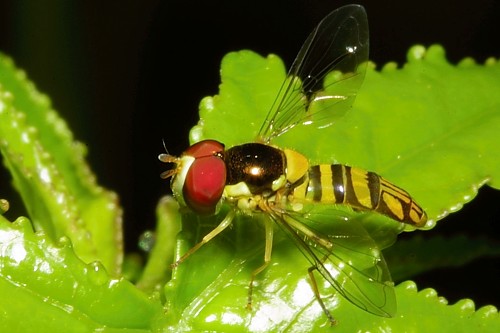 |
| This is where an electronic flash can really come in handy, but even here there are problems. With working distances of say 5 or 6 inches, how do you get the light where you need it, and avoid creating harsh shadows either from the lens itself, or distracting shadows from the subjects you're photographing? One solution is to use a ring flash. Canon makes one (MR-14EX) and I may look into getting one of these. Typical ring flashes provide flat, uniform lighting, and are somewhat undesirable for that reason. The Canon ring flash, though, has several flash tubes in it, and you can control the ratios between them, to avoid having flat, lifeless light. |
 |
| The other option is to use a bracket to enable you to position the flash close to the subject, and generally from a small angle above the subject (so shadows are below and less distracting). Various companies make such brackets, some of which allow use of dual flashes on both sides. My reading indicated many who start with this end up abandoning them in favor of a single flash bracket because they're just so big, heavy and cumbersome to use. I decided on the FB-6 bracket made by Kirk Photo, and mounted my 550EX on it, using the Canon ST-E2 to trigger the flash without needing a sync cord. To further 'soften' the light, I put the Stofen Omnibounce on the flash. |
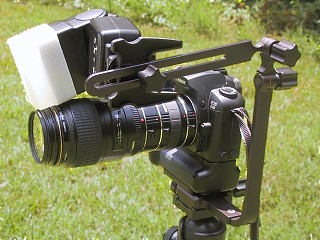
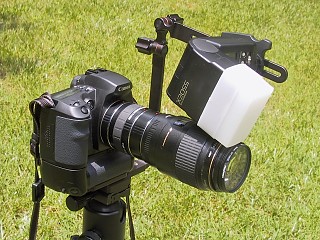 |
| The pictures here show my setup from the left and right. I mounted it on a tripod to make it easier to photograph, but the shots shown here were all hand-held. |
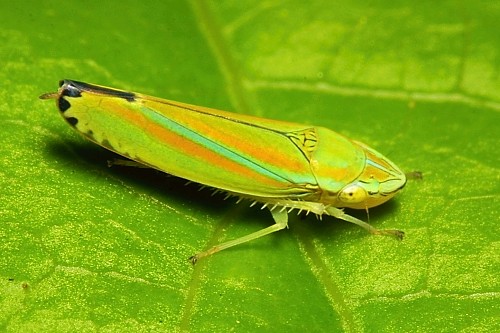 |
| Even by going with a single-flash bracket system, the equipment was still heavy and bulky enough to make it difficult to hold steady, and the exquisitely narrow depth of field made focusing highly challenging, to say the least. Still it was fun going out in my backyard, and was amazed to see the variety of bugs on the order of 2 to 6 mm in size that were all around the various trees and bushes. |
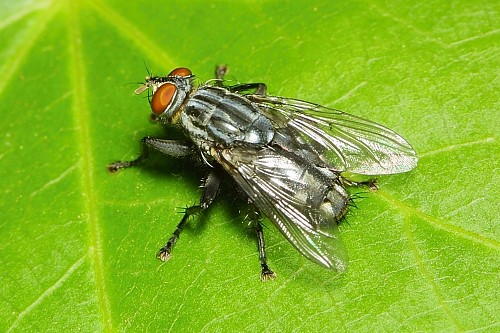 |
|
Additional Macro shots and other types of wildlife and landscape photography can be seen at my website: |
|
|
| For Comments post in our News Group |